Planting Flower Gardens
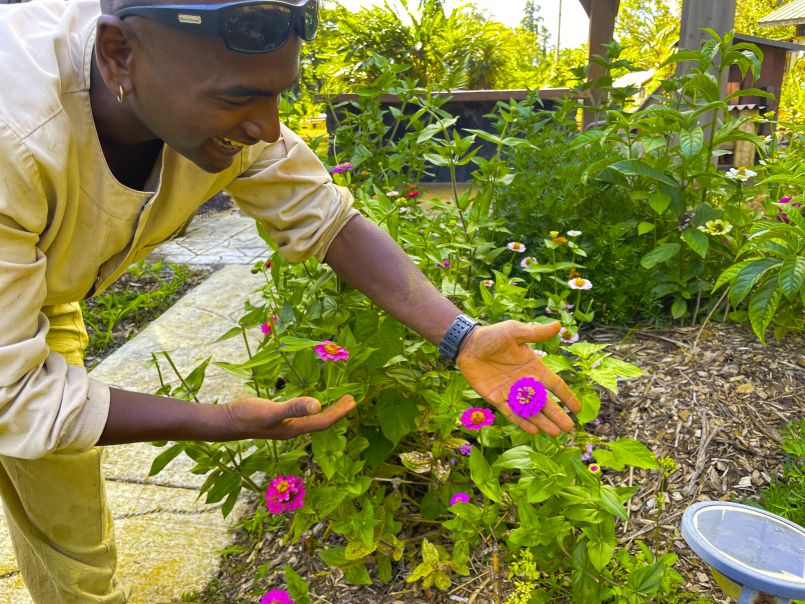
Jai Ganesha!
Over the last year, Yogi Dayanatha has spent time gradually adding life and beauty to the area around our monastery's woodfire oven. He's cleared old, shaded foliage and replaced it with rock-encircled mounds of colorful flowers and decorative palm trees. The area now feels open, airy and bright. The array of flowers—which will eventually overflow their beds in polychromatic abundance—include Impatiens, zinnias, marigolds and roses. Aum.
Giant Fishtail Palm
This palm is in full glory, growing just 150 feet East of Iraivan Temple in Rishi Valley. It is astonishingly productive, creating thousands of flowers and seeds in all stages of maturity. It is officially called Caryota obtusa, and is a native of Laos and Cambodia. Enjoy seeing it up close.
The Fungus Amongus
Next to the Aadheenam's primary vegetable garden, you'll find heaping hills of wood chips. These chip are regularly gifted to us by several local tree trimmers who are happy to have a place to offload them. We put these mulch piles to good use as we top vegetable beds and mulch our other gardens. In walking by them each day, one monk noticed the many varieties of fungi growing among the chips, and started recording them all. Some fungi lasted for a few weeks, while others mysteriously came and went in a single day. All we know for sure, is that they absolutely love our subtropical environment (as do we!). Aum.
Did you know?
A fungus known as the honey mushroom is the largest living organism on the planet. It is believed to be about 2400 years old. It covers over 2000 acres, killing trees as it spreads.
Garden Seva
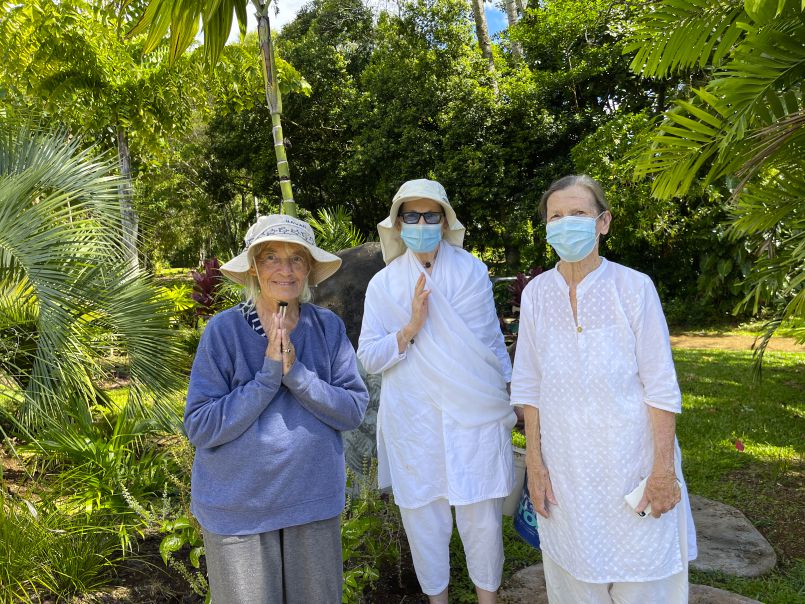
Aum Namah Sivaya
Each week, on Tuesday, a stalwart group of dedicated island devotees adventures together into the sacred gardens around Iraivan Temple. During the morning hours, they plant new plants, weed garden beds and more. Though largely an anonymous instance of seva (and we're sure they'd probably like to keep in that way), we thought it would be nice to highlight these humble sevaks as they make their way through the gardens near and around Dakshinamurti for a day. After their Sivathondu ends around mid-day, the monks take them a South Indian lunch to share under the Iraivan Garden Pavilion. Aum.
Aerials of Hanuman’s Garden
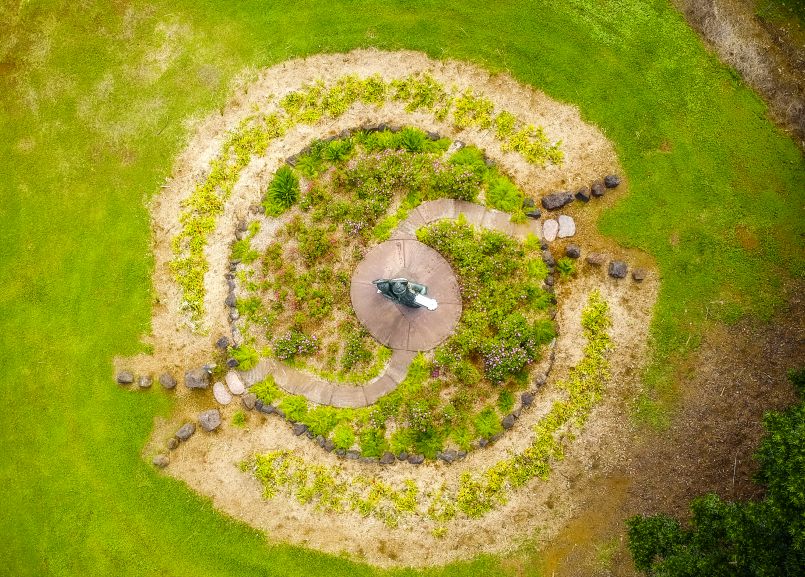
Recently the mound around Lord Hanuman has been given an upgrade. With some new plants and extra upkeep, the area is looking splendid. Not too long from now the fields around Him will transform into the preliminaries of our visitor center. Thankfully these plants still have ample time to grow and flower. Aum Anjaneyaya Namah
Iraivan Temple Landscaping – Before & After


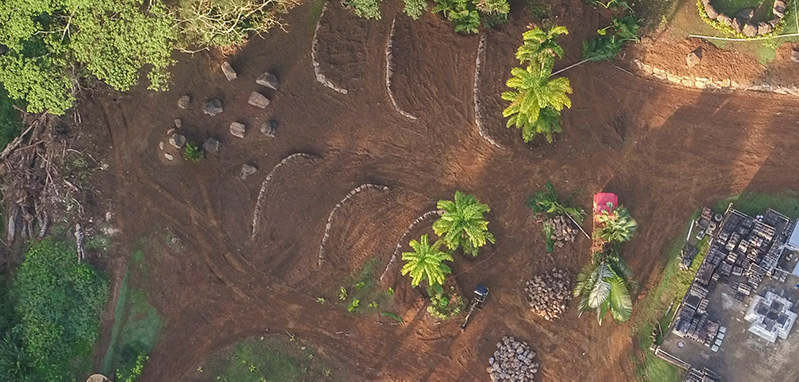
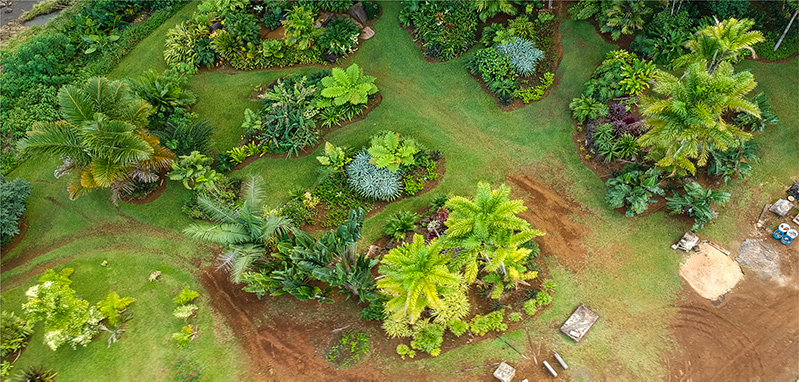
New Sign for the Banyan Tree
Back in 2004 during Guru Purnima monks and devotees gathered to plant this special banyan tree. It's called Pillar Banyan and the official name is Ficus bengalensis. At the time of planting it was about 10 inches tall in a one-gallon pot.
It grew, and grew. If you look closely at this photo, to the right you will see that the branches of the tree engulfed the original sign which was attached to the trunk and is now barely visible. So we made a new sign recently, and with knowledge added by experience put it well away from the tree.
Something a bit charming is happening. The tree is surrounding some granite stones we stored near it years ago, swallowing them (see other photos). One day they will be inside the tree.
This will be an immense tree one day. There is one in Bengal that was so big Alexander the Great camped his entire army of 7,000 soldiers under it during his failed attempt to conquer India. You can read the new sign for more background.
The tree will live for two thousand years or more, growing old along with Iraivan Temple.
Building Roads
A new pathway is being built near the Path of the Saiva Satgurus. It gives a formal exit to the path for future pilgrims who are returning to their cars at the Visitors' Center. Happily, it is being done by none other than Dennis Wong, who has worked for 40 years on the monastery land, building roads, ponds and gardens. Dennis arranged for the large equipment to be loaned to the monastery for free! Thank you, Dennis.
Behind the Glass
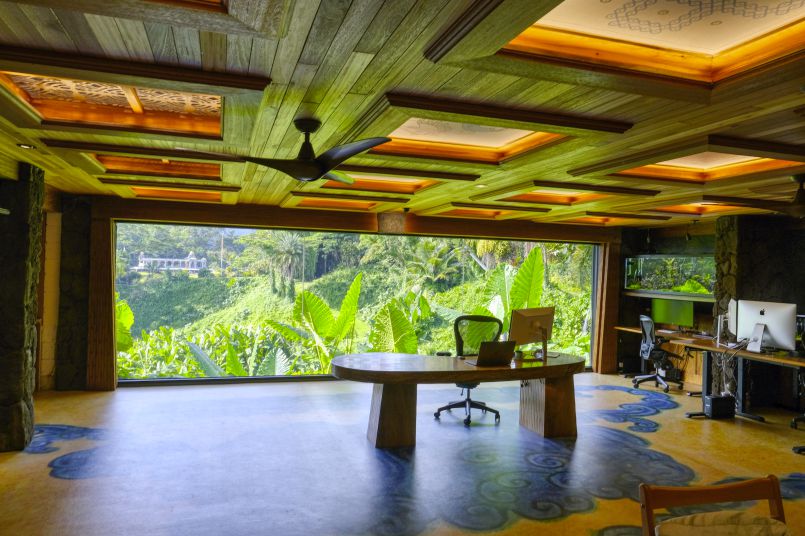
In the Ganapati Kulam's Media Studio, you are taken aback by the beauty of the natural view of the river, mountain and Iraivan Temple. As you peer out from these glass panels, you're not as likely to notice the smaller panel nearby. Gurudeva encouraged monks and members to have art forms that involve the refining of something physical, reflecting the constant refinements within our own minds. So we are, of course, talking about the office's 125 gallon freshwater aquarium—an example of cultivating the growth of a living system and maintaining its balance. With a recent request for an update of this tank, this post seemed like a relaxing thing to leave you all with for our upcoming two days of retreat. Venture through the slides to learn more. Aum.
Observing Sadhu Paksha
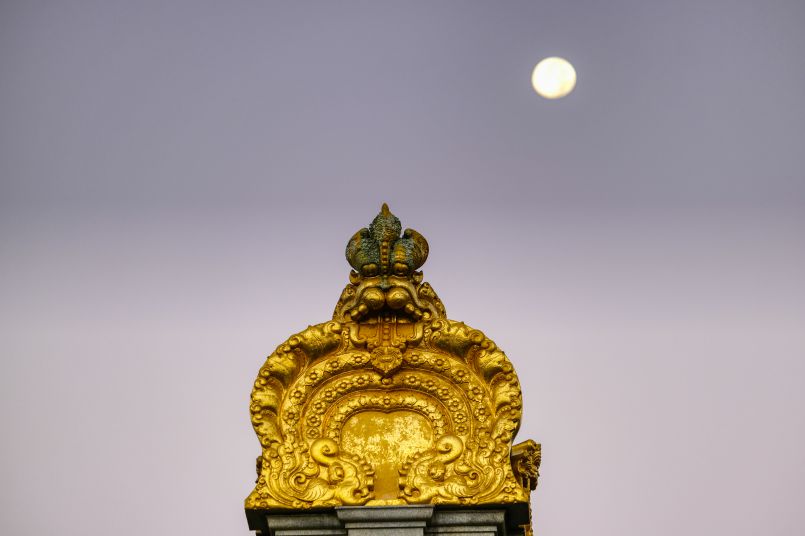
Aum Namah Sivaya
Many blessings from Kauai Aadheenam on this Ardra Nakshatra.
Today our monks began two weeks of "Sadhu Paksha," a time of reflection and quietude before the changing of seasons from our harvest season to our winter season, the Moksha Ritau. For these two weeks our monks enjoy the natural beauty that surrounds them. A sunrise stroll reveals flowers, birds, fish, ancient stones, a bright moon above and a fiery sky. Aum.
"All you have to do is to watch your mind think. Then and only then are you experiencing your perfect state of inner being." Gurudeva
From Our Gurus' Teachings
Archives are now available through 2001. Light colored days have no posts. 1998-2001 coming later.
